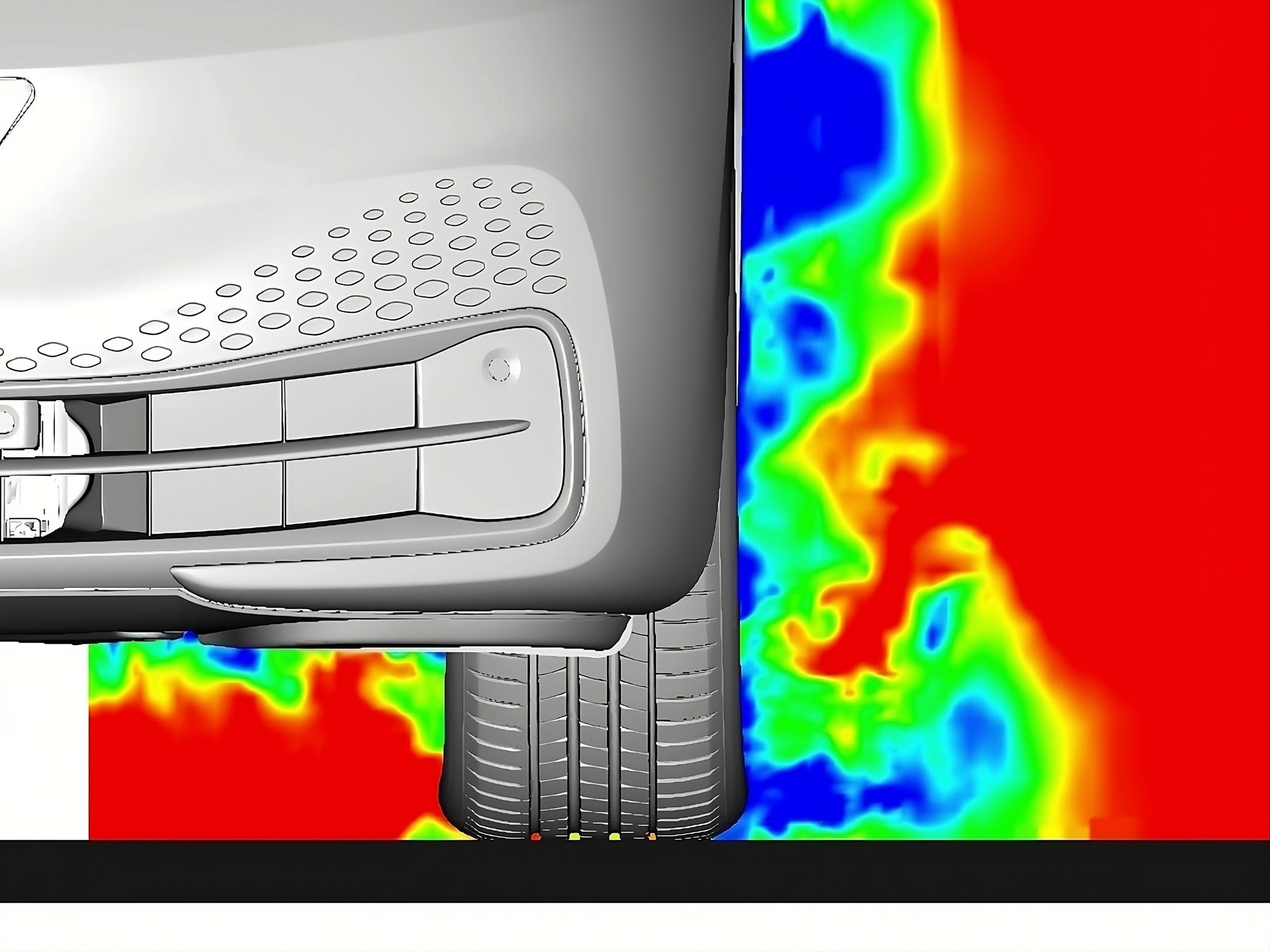Sumitomo Rubber Develops ‘Tyre Aerodynamic Simulation’
Falken Tyres' parent company, Sumitomo Rubber Industries, Ltd. is pleased to announce the development of a new simulation technique called ‘Tyre Aerodynamic Simulation,’ which is used in the process of tyre development. To reduce the fuel (electricity) consumption of electric vehicles (EVs), it is very important to minimise tyre rolling resistance as well as air resistance around the tyre. Sumitomo will pursue the development of a tyre shape that optimises aerodynamic performance by visualising the airflow around the tyre of a running vehicle through our own simulation using AI, thereby aiming to develop a tyre that further contributes to lowering the electricity consumption of an EV in a next-generation EV tyre to be launched in 2027.
One important performance characteristic required of an EV tyre is achieving low electricity consumption to maximise the range. In addition to measures already taken to reduce tyre rolling resistance, Sumitomo will focus on decreasing air resistance, which is important to lower the electricity consumption of an EV tyre. Our recently developed simulation technology, ‘Tyre Aerodynamic Simulation,’ will help us to accomplish this goal.
With a rapid shift to EVs occurring today, the impact of air resistance is becoming increasingly important. Unlike internal combustion engine (ICE) vehicles, which lose over 50% of their energy due to heat, EVs suffer much less energy loss from heat. This means that air resistance accounts for a larger portion of total energy loss in EVs. The tyres are exposed to the outside of the vehicle body, and the air that passes around the tires flows out to the side and underside of the vehicle. As a result, 20 to 25 per cent of the energy loss due to air resistance in a passenger car is related to the tyres. In EVs, which cause almost no energy loss due to heat, around 34 to 37 per cent of the energy loss is attributed to the tyres, if rolling resistance is included.
The newly developed ‘Tyre Aerodynamic Simulation’ is a simulation technique that allows us to visualise air resistance around a tyre. It uses actual vehicle data to calculate the aerodynamics of a rotating tyre while simulating the tyre pattern and analysing results using AI technology. The simulation technique accounts for the effect of tyre deflection due to vehicle weight. In addition, we have developed a simulation technique that changes the shapes of the lettering and fine texture on the sidewall while they are rotating in the same way as the pattern. While it is important to smoothen the sidewall to reduce air resistance in EVs, using the newly developed simulation technique will enable the development of a tyre that achieves both design and aerodynamic performance at higher levels.
In comparison with the results of a wind tunnel experiment, which was conducted with an actual vehicle to confirm the accuracy of the simulation, the EV tyre with a decreased airflow trend behind the tyre and greater evenness on the sidewall showed lower air resistance values than the standard tyre. This confirmed the potential of the newly developed simulation technique. Furthermore, the AI technology used in the simulation suggests that the sidewall plays a crucial role in air resistance reduction when the air resistance is high, offering additional evidence of the effectiveness of the technology. Adopting this technique yields improved tyre performance with maximised aerodynamic characteristics, leading to reduced aerodynamic drag and electricity consumption for an EV.
We unveiled our own unique Circular Economy Concept for the Tyre Industry, which we call TOWANOWA, in March 2023. TOWANOWA features a two-ring structure, with a ‘Sustainable Ring’ consisting of five processes in the value chain and a ‘Data Ring’ linking big data collected from each process. We aim to provide new value by sharing/using data between the two rings.
The newly developed Tyre Aerodynamic Simulation technique will use simulation data obtained through the ‘Planning & Design’ process to reduce air resistance when the vehicle is running, and thereby help lower the electricity consumption in EVs.
Through TOWANOWA, the Sumitomo Rubber Group will further accelerate our efforts to promote and practice ESG Management and contribute to the achievement of carbon neutrality by 2050 and the development of a sustainable society.

